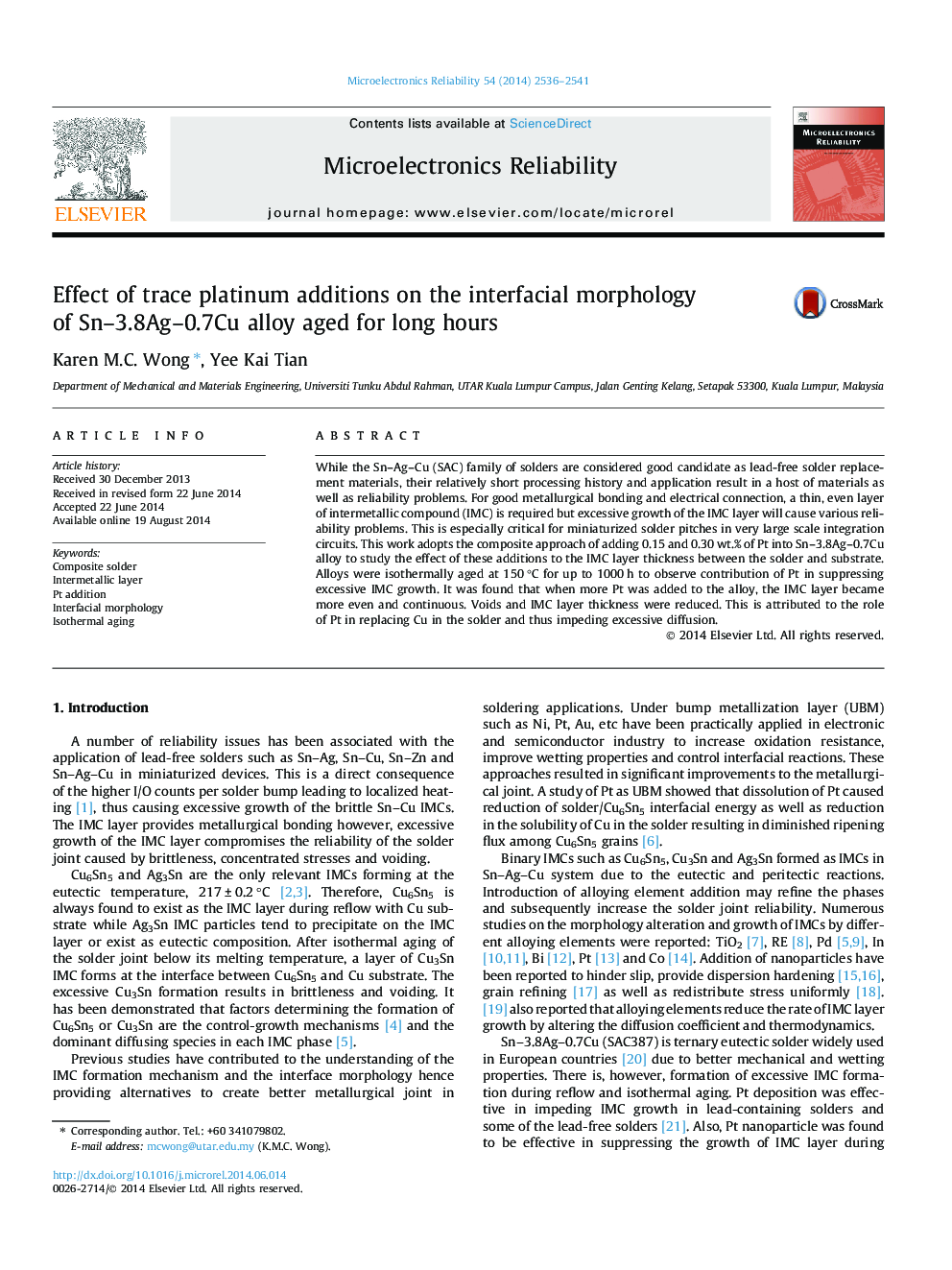| Article ID | Journal | Published Year | Pages | File Type |
|---|---|---|---|---|
| 546805 | Microelectronics Reliability | 2014 | 6 Pages |
•Pt was introduced into Sn–3.8Ag–0.7Cu (SAC387) solder alloy.•Reflow was carried out on a hot plate at 240 °C for 60 s.•The interfacial samples were then aged up to 1000 h at 150 °C.•IMCs and Kirkendall voids decreased with increasing amount of Pt.•SAC387–Pt/Cu show a more reliable solder interconnection to SAC387/Cu.
While the Sn–Ag–Cu (SAC) family of solders are considered good candidate as lead-free solder replacement materials, their relatively short processing history and application result in a host of materials as well as reliability problems. For good metallurgical bonding and electrical connection, a thin, even layer of intermetallic compound (IMC) is required but excessive growth of the IMC layer will cause various reliability problems. This is especially critical for miniaturized solder pitches in very large scale integration circuits. This work adopts the composite approach of adding 0.15 and 0.30 wt.% of Pt into Sn–3.8Ag–0.7Cu alloy to study the effect of these additions to the IMC layer thickness between the solder and substrate. Alloys were isothermally aged at 150 °C for up to 1000 h to observe contribution of Pt in suppressing excessive IMC growth. It was found that when more Pt was added to the alloy, the IMC layer became more even and continuous. Voids and IMC layer thickness were reduced. This is attributed to the role of Pt in replacing Cu in the solder and thus impeding excessive diffusion.
